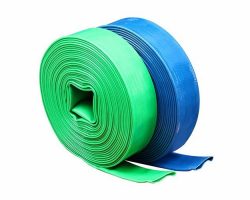Pipe fittings are parts that connect pipes into pipes. Pipe fittings include a wide range of common flange, union, pipe hoop, ferrule, hose clamp, tee, and so on. It has a deep origin with the pipe, both are almost the same, so what are the commonly used pipe fittings? In addition, what is the pipe classification? Now let’s explain it to you.
What are the commonly used pipe fittings according to their use?
Flange: pipe to pipe connection between the parts, used for the connection between the pipe ends, also used in the import and export of equipment flange.
Classification: integral flange, threaded flange, plate flat welding flange, neck butt welding flange, flange cover
Union: also known as Youren, the shape is a three-dimensional polygon design, the inner layer is engraved with solid thread, the connection form is a fixed joint and a flexible female joint
Pipe hoop: a kind of fitting commonly used in industrial pipe connection, used to connect a short pipe of two pipes.
Classification: threaded connection, welding, fusion welding, carbon steel, stainless steel, alloy steel
Ferrule: one of the three parts of the ferrule type pipe joint (ferrule, nut, seamless steel pipe). The inner edge of the ferrule evenly cuts into the seamless steel pipe to form an effective seal.
Hose Hoop: widely used in automobiles, tractors, forklifts, locomotives, ships, mines, petroleum, pharmaceutical, and other water, oil, gas, dust, etc., is an ideal connection fastener
Cold drawn tee: a section of the main pipe plus a small branch pipe, two large sizes are the main pipe, and the small size connecting from the middle is the branch pipe.
Elbow: a kind of pipe fitting commonly used in plumbing installation, which is used to connect pipe bends and change the direction of the pipeline.
Elbow: a complete set of bending die is used for bending. No matter what kind of machine equipment and pipeline, most of them are used for oil, gas, and infusion
Reducer: also known as reducer, is one of the chemical pipe fittings, used for the connection of two different pipe diameters. It is divided into concentric reducer and eccentric reducer.
Reducing elbow: change the diameter of the pipe when making a 90-degree turn. Big and small heads can’t be used for turning. There is a hot push elbow, stamping elbow, and welding elbow.
Branch set: also called branch pipe seat, saddle, and saddle type pipe joint. The reinforced pipe fittings used for branch pipe connection are used instead of reducing tee, reinforcing plate, and reinforced pipe section.
Tee: tee is pipe fitting and pipe connector. Also called pipe fittings tee or tee fittings, tee joints, are used in the main pipe to branch pipe.
Cross: used to connect four pipes with the same nominal diameter and form a vertical intersection.
Gasket: placed between two planes to strengthen the sealing material, to prevent fluid leakage between the static sealing surface of the sealing element.
Raw material belt: a kind of auxiliary equipment commonly used in plumbing installation, which is used for the connection of pipe fittings to enhance the tightness of pipe joints.
Thread hemp: a kind of auxiliary article commonly used in the installation of water heating. When used, it is wrapped on the thread of pipe fittings, which can play a sealing role and prevent water leakage.
Flange blind plate: also known as blind flange, the real name is blind plate. It is a connection form of the flange. It is a flange without a hole in the middle.
Pipe plug: installed on the internal thread of pipe end.
Head: the head is a kind of boiler part in pressure vessels. It is usually used at both ends of a pressure vessel.
Welding plug: to plug the unnecessary opening in the pipeline, which plays a sealing role. It is identical with a blind plate, head and cap.
Pipe clamp: used to fix the pipe fittings, a kind of pipe fittings commonly used in plumbing installation, used to fix the pipes.
Valve: it is the control part in the fluid transportation system, with the functions of cut-off, regulation, diversion, pressure stabilization, shunt or overflow pressure relief
Compensator: it is composed of bellows, end pipe, bracket, flange, conduit, and other accessories. It belongs to a compensation element.
Dirt remover: to prevent impurities in pipeline medium from entering transmission equipment or precision parts, which may cause product failure or affect product quality.


